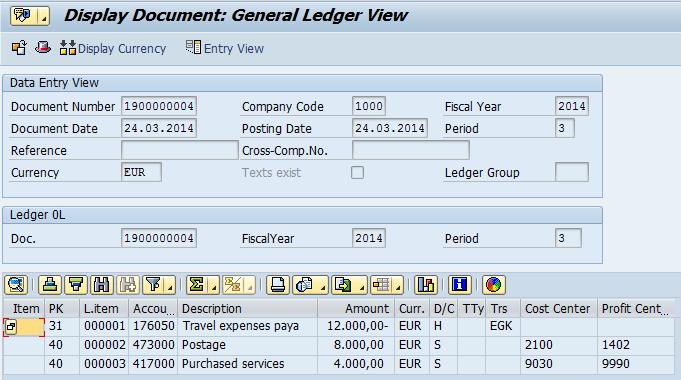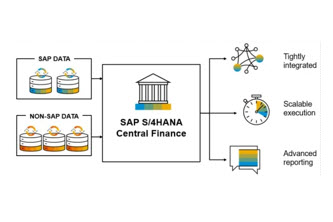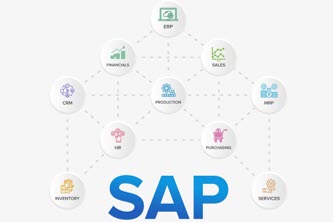Kickstart Your Career: Mastering SAP Inventory Management
by Michael Management
 SAP inventory management is an in-demand skill set from large companies that are looking to better control the product that they sell.
SAP inventory management is an in-demand skill set from large companies that are looking to better control the product that they sell.
But how does someone get started in SAP inventory management? What does it look like to truly start your career?
We’ll answer those questions in this blog! To start, we’ll cover the basic functions that you should know about SAP.
1. Learn the Fundamentals
The fundamentals of SAP are vital for all specialists and consultants to understand. In a nutshell, these are the functions that you’ll have to use regardless of your position. You’ll need them at every level of SAP understanding from beginner to expert.
These skills include things like basic menu navigation, user interface layout, personalization opportunities, and more.
Understanding the ins and outs of these fundamental functions will allow you to build a foundation. Only after learning the basics can you learn the skills required for more specialized work, including inventory management.
With that said, let’s jump into some of the specifics you’ll have to know to start work in SAP inventory management.
2. Work with Product Movements
One of the key parts of working in SAP inventory management is controlling product movements.
Product movements occur any time a product goes from one location to another. This could be for any number of reasons, including internal shipping, restocking, or fulfilling an order.
Tracking product movement is essential to businesses with extensive logistics branches, particularly those in shipping and retail.
By learning and understanding how to track product movements, you’ll have the most important skill related to inventory management under your belt. A skill that not only ensures product is properly tracked, but also accurately recorded in its present and past locations.
3. Perform Inventory Counts & Corrections
Naturally, whenever you have logistics in a company, there will be a few times that you have to manually verify that an item is factually where it’s said to be in your software.
Often, this is called an “inventory count” or “inventory correction,” and it’s the physical act of going to a location and tracking down a particular product, according to its identification in your software.
This process bears a similar resemblance to how inventory was done in the past, where someone will physically arrive at a location to inspect the area’s stock, record what’s present, and remedy any discrepancies between the software and their physical count.
While this may not sound like it requires training in SAP to correctly perform, it’s important to note because you’ll have to learn how to enter the proper data into SAP.
So it’s true that it may be somewhat intuitive to count inventory without extensive training on how to do so — but the important part comes when you use the SAP software to correct any errors or update any locations of existing stock.
4. Run Stock Reports
Stock reports in SAP form the backbone of proper inventory management.
These reports show all of the data that someone needs to know in order to gain a full view of the current inventory at a location or in a specific state.
Your capability to run these reports will not only be part of your job role in inventory management — it will also allow executives and other decision-makers determine the best course of action for the company as it relates to stock in general.
This means that an inventory management position in SAP is critically important to a company as a whole. It’s not just “tracking boxes” or providing logistical support. Instead, it’s providing up-to-date, accurate data on the current state of a company’s products so that the leadership can make important decisions.
So there’s one more question – if you want to become a SAP inventory management specialist, where do you start?
Start Your Journey in SAP Inventory Management
If you’re looking to start working in inventory management with SAP, we have just what you need!
We offer a variety of SAP courses and learning paths, allowing ambitious specialists to learn more about SAP, expand your skill set, and enjoy a more lucrative career.
If you are looking for SAP Training for your Business, you can sign up for a free, 10-day Corporate SAP Training Trial.
And if you’d like to start working toward proficiency with SAP inventory management, click here to preview an SAP simulation course.
by Michael Management
More Blogs by Michael Management

Unlock Financial Precision: The Critical Role of...
Mastering Document Splitting in SAP Central Finance: Essential Ins...

Unlocking Success: The Strategic Imperative of Group...
Why is Group Reporting Critical for SAP Central Finance? Masterin...

Related Blogs

Unlocking Success: The Strategic Imperative of Group...
Why is Group Reporting Critical for SAP Central Finance? Mastering...
.png)

